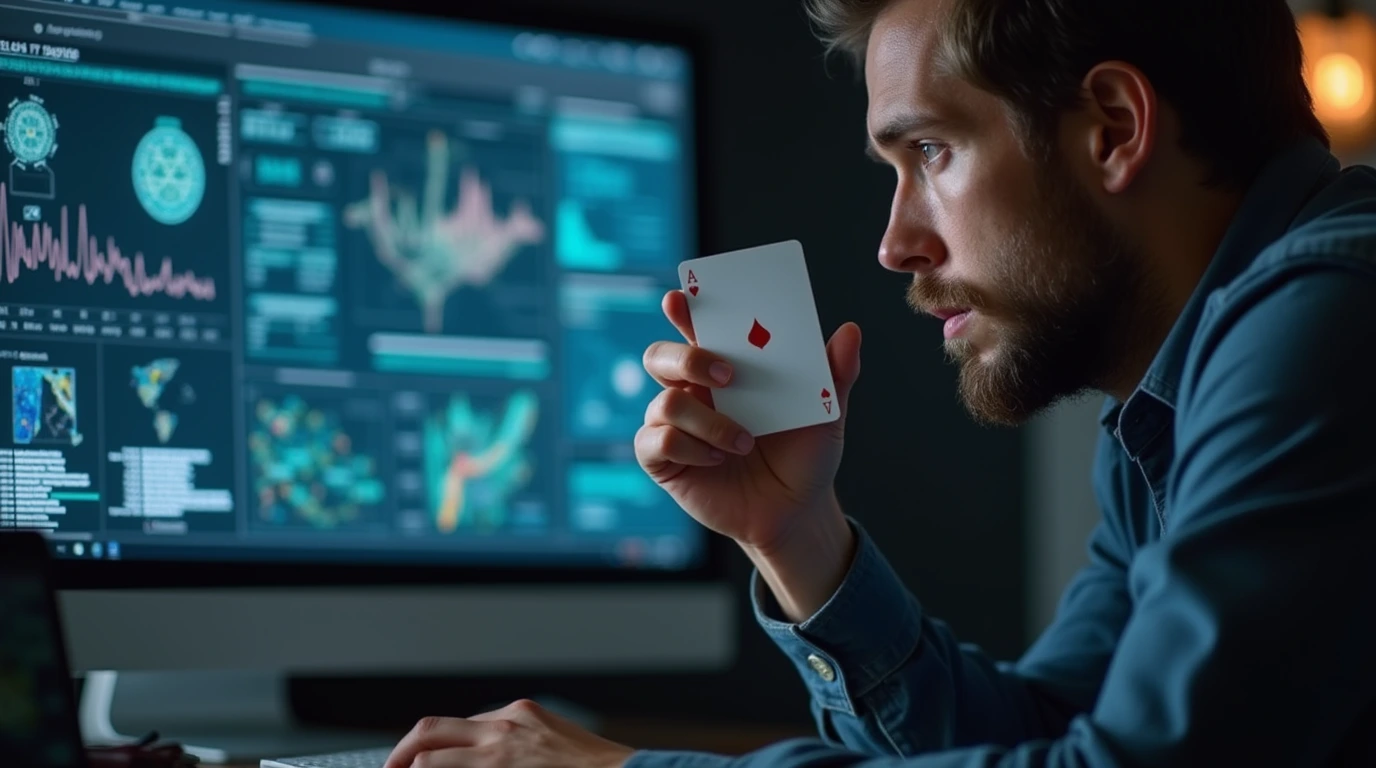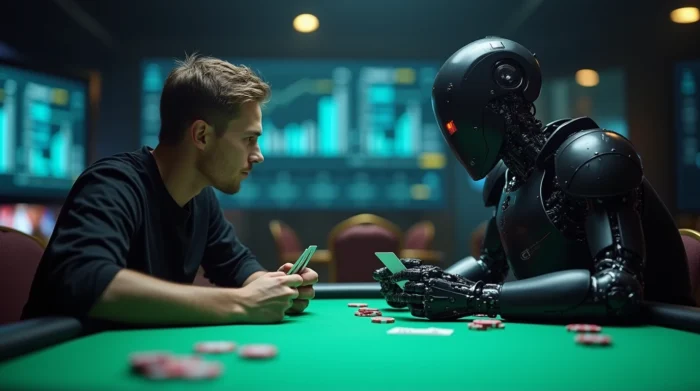The world of poker has always fascinated me. There’s something deeply satisfying in the combination of luck, strategy, and psychology that makes each hand unique. But what if I told you that the days of staring into someone’s eyes to gauge their next move might be numbered? In my line of work, I’ve seen how artificial intelligence (AI) is gradually creeping into every corner of our lives, and poker is no exception.
You see, poker AI isn’t just about calculating odds or running simulations—it’s about teaching machines to play a game designed around human emotions, deception, and unpredictability. My journey into poker AI research began with a simple question: Can a machine really learn how to bluff? Spoiler alert—it can, but not in the way you’d expect.
Poker has always been more than just numbers to me. I started diving into it during my studies in probability theory, first at Moscow State University, then at Cambridge. Poker was the perfect testing ground for many of the mathematical models I was developing. Later, as I delved deeper into artificial intelligence during my postdoc at MIT, poker became something more than a game; it became a tool to push the boundaries of AI.
Let me be clear: AI poker bots aren’t some magical formula that guarantees victory at every table. Yes, they’re impressive. Yes, they can analyze mountains of data in seconds, calculating every possible outcome. But poker isn’t chess. It’s not a game with perfect information, and that’s where things get interesting. The human factor—bluffing, irrational decisions, and even fatigue—throws a wrench in the gears of any AI. No matter how well we program a poker bot, it still struggles with unpredictability, and that’s a big part of what makes poker AI so fascinating.

In my experience, there’s a certain irony in watching a poker AI play. It’s cold, calculating, and efficient, yet completely oblivious to the subtleties of human behavior. It doesn’t get nervous. It doesn’t second-guess. It simply reacts based on the data it’s been fed. This can lead to some wild results. Imagine sitting at a table with a machine that never tilts, never folds under pressure, but sometimes—just sometimes—makes a hilariously bad read because it missed that one subtle cue only a human would notice.
Despite its flaws, poker AI has come a long way. The algorithms I’ve helped develop over the years have transformed how both amateurs and professionals approach the game. These machines don’t just play to break even; they aim to exploit every mistake their opponents make. But here’s the twist—poker AI isn’t perfect. It can’t always “read” a human as well as another person might, and in short games, it doesn’t always have time to fully adapt. It’s like playing chess with a blindfold on, knowing you’re good but missing half the board.
The real magic happens when AI combines machine learning with an understanding of human psychology. One of my favorite experiments was a deep dive into what we call “short-term exploitation.” Essentially, it’s about teaching the AI to quickly learn an opponent’s strategy in a limited number of hands and adjust its gameplay to counter them. This is where the machine really gets clever—or, depending on how you look at it, a bit too clever for comfort.
In poker AI development, we often face a dilemma. On one hand, we want our bots to play safe, sticking to tried-and-tested strategies like Nash equilibrium, where the AI minimizes its losses in the long run. On the other hand, we want them to take risks, to step outside the safe zone and exploit human weaknesses as soon as they spot them. Balancing these two approaches has been one of the most challenging parts of developing the best poker AI software.
Take the simplified game of Kuhn poker, for example. It’s an ideal playground for testing poker AI algorithms because of its small size and known strategies. Even in this controlled environment, teaching a machine to exploit a human player in fewer than 100 hands can be incredibly difficult. Sure, the AI can calculate probabilities and predict optimal moves, but when it comes to adapting on the fly, it’s not as fast as we’d like. However, once it gets going, you better believe it’s coming for your stack.
But that’s not to say poker AI doesn’t have its moments of brilliance. One of the things I love about poker bots is their ability to think in ways that humans never could. They see the game from angles that would never occur to a human player. For instance, some of the AI strategies we’ve developed involve deliberately playing “bad” hands in order to confuse opponents and keep them guessing. It’s like playing mind games with someone who doesn’t have a mind. The irony isn’t lost on me.
Of course, all of this raises the question: Are poker bots ruining the game? Some purists argue that using AI is nothing more than cheating, while others see it as the inevitable future of poker. Personally, I see poker AI as a tool, not a crutch. It’s not about removing the human element from the game, but about enhancing it. I’ve played against some of the best poker AI in the world, and trust me—there’s still plenty of room for human creativity and intuition at the table.
In the end, poker is a game of incomplete information. No matter how advanced the poker AI becomes, it will always lack one crucial element—emotion. AI might learn how to bluff, how to calculate odds, and how to exploit weaknesses, but it will never understand why a player goes all-in on a weak hand out of sheer desperation or why someone folds the winning hand because of a gut feeling. Those are the moments that define poker.

As we continue to push the boundaries of what poker AI can do, I find myself more and more fascinated by the possibilities. Maybe one day, we’ll create a poker bot that truly understands the game on a human level. Or maybe, just maybe, poker will remain the last bastion where the human mind still holds an edge. Either way, I’m excited to find out.
